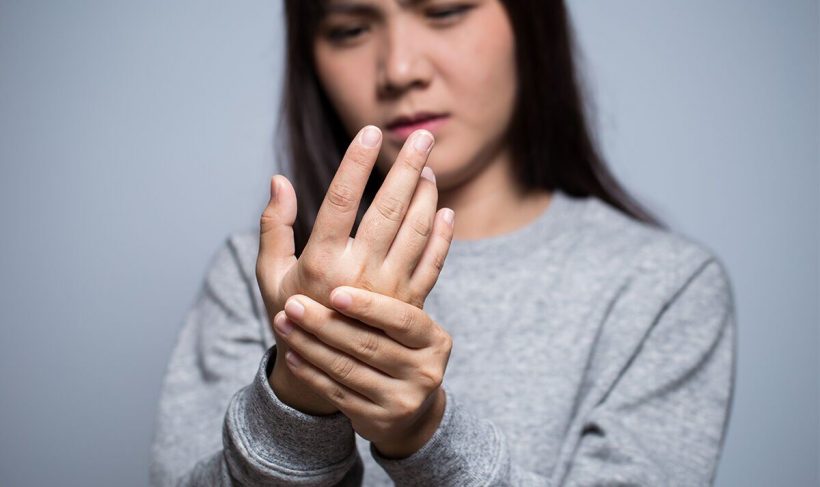Rheumatoid Arthritis: NHS on common signs and symptoms
We use your sign-up to provide content in ways you’ve consented to and to improve our understanding of you. This may include adverts from us and 3rd parties based on our understanding. You can unsubscribe at any time. More info
Millions of Britons are currently living with arthritis and other joint problems. Depending on your diagnosis it can lead to painful, swollen and stiff joints, as well as mobility issues. While it is more common the older you are, there can be signs when you are younger that you could be at risk of the condition later in life.
There are two main types of arthritis, osteoarthritis and rheumatoid arthritis.
Osteoarthritis is far more common in the UK.
It affects the smooth cartilage lining of the joint, making movement more difficult than usual and leading to pain and stiffness.
As the cartilage lining starts to thin out, the ligaments and tendons are forced to work harder, which can result in swelling.

It most commonly affects joints in the hands, spine, knees and hips.
Consultant rheumatologist who is working in partnership with GOPO Joint Health, Doctor Rod Hughes, spoke with Express.co.uk about some of the warning signs of osteoarthritis younger people could experience.
One warning sign was bony growths that could appear on your big toe or on finger joints.
He said: “Whilst arthritis typically develops in your mid-40s, there are some early signs to look out for which could indicate a future diagnosis.
“Joint pain and tenderness in or around a joint which is present for a prolonged period of time, as well as joint stiffness present in the morning or after long periods of inactivity are common early symptoms of arthritis.
“Occasionally younger people notice the development of extra bone on the joint of the great toe (bunion) or on the joints at the end of the fingers (Heberden’s nodes) and these can be a sign of the development of osteoarthritis.”
The Cleveland Clinic describes Heberden’s nodes as “small, pea-sized bony growths” that “occur on the joint closest to the tip of the finger”.
Habits that could raise your risk of arthritis
Taking part in sport can increase the risk of arthritis when you’re older.

Dr Hughes said: “Those who partake in intense sporting activities are somewhat at a greater risk of developing arthritis, often as a result of an injury to a specific joint such as the knee or shoulder.
“In fact, research shows that almost 50 percent of individuals who sustain a major knee injury go on to develop knee osteoarthritis later down the line.
“If a joint is not allowed to heal correctly, with appropriate rest and physiotherapy, cartilage deterioration can be accelerated causing prolonged joint pain and stiffness so it’s important to take rehabilitation seriously and follow advice from your doctor.
“In addition, although you cannot change your genetic background, a family history of arthritis can mean you may be predisposed to the condition as you get older.”

Reducing the risk of arthritis
“Prevention really is key to maintaining long-term joint health and there are many things that can be done to help slow or stop the development of arthritis,” Dr Hughes added.
“Maintaining a healthy body weight which avoids additional strain on the weight-bearing joints is crucial, coupled with regular exercise and a balanced diet inclusive of anti-inflammatory foods, such as green leafy vegetables, fatty fish and nuts.
“Alongside this, natural supplements can offer additional support, helping to protect joints from the inside out.”
Common symptoms of arthritis include:
- Joint pain, tenderness and stiffness
- Inflammation in and around the joints
- Restricted movement of the joints
- Warm red skin over the affected joint
- Weakness and muscle wasting.
Source: Read Full Article
